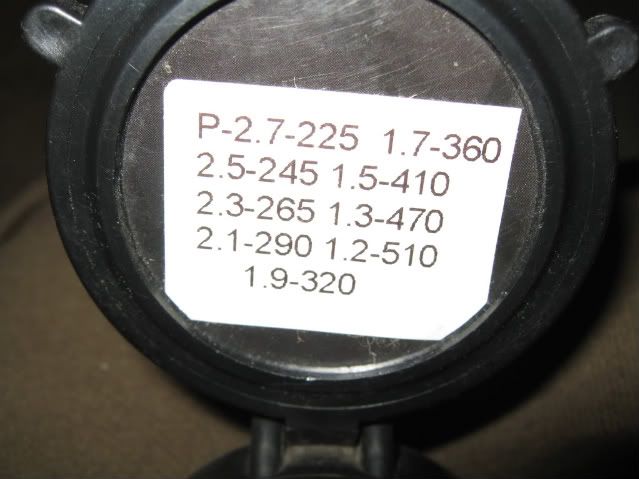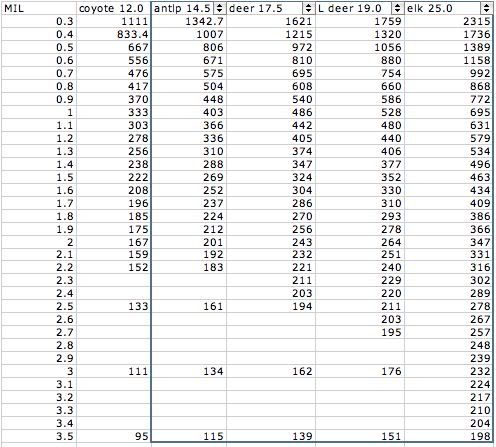Yes JL, reticle subtension is inversely proportional to magnification. As u DECREASE power, reticle subtension INCREASES. This can easily be seen right out some window of your house probably on something like house bricks at a distance. At 10x the mil will cover X amount of area at any particular distance and at .5 that power (5) it will cover 2X. The problem is that few power rings are calibrated properly for magnification, but they will be close. For downrange zeroing that's OK, but not for rangefinding as ranges increase.
I use all my multi-stadia reticles for rangefinding at the optic's highest power, since the smaller the subtension, the more accurate reticle-rangefinding is. Of course the "MDM" some of the guys mentioned here can't really be used when the mil is no longer 3.6 IPHY between dot centers without calc'ing a factor, but i don't use that anyway--especially since i'm not usually using a mil-dot reticle. I use many ballistic and some rangefinding reticles but they are just as handy for this purpose, some even more so.
When calc'ing a reticle-rangefinding system for my reticles i put the info in a Butler Creek Blizzard-style objective style cover for very fast reference--if i ever need it.
If your an engineer this stuff oughtta' be right up your alley. The math is simple--5 unknowns in the equation ("mil-ranging formula") that should be detailed somewhere in that link--easily memorized with some experience. Nice thing about it is u can reverse mil the formula too to calculate any of the other unknowns once 4 are determined (target size being the only other real unknown u would probably ever use).
Have fun--this stuff is a kick to play with, sometimes yielding some truly eye-opening results.





